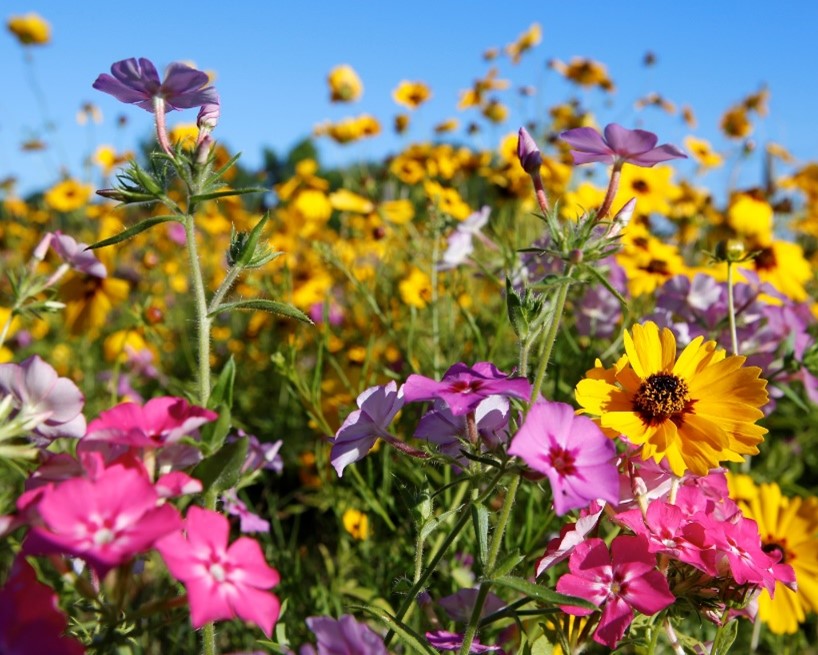
To celebrate “No Mow March”, this month’s Gardening in the Panhandle LIVE was all about pollinators. “No Mow March” was inspired by “No Mow May” events that were originally organized in Great Britain then adapted by some of our more northern states. Lawns in the panhandle definitely need to be mowed in May, so we set our sights on March.
Most warm season turfgrass species don’t grow much (or at all) in March, but some people may feel the need to mow their lawns. If you feel the need to mow, we recommend you leave the borders of your lawn or a small area un-mowed. This will encourage flowering plants to bloom and bring more pollinators to your yard.
Butterflies are loved by many for their beauty, but they also pollinate a lot of our favorite plants. To encourage butterflies to visit your garden, try planting some things they like to eat. The publication “Butterfly Gardening in Florida” provides lots of information about bringing butterflies to your yard. Be sure to check out the tables in the article for information on seasons and life cycles. If butterflies aren’t your thing, then search for plants by pollinator species in this webpage on Nectar Plants. Some plants have Extrafoliar Nectaries to attract a diversity of insects.
If you’re interested in anything about any insect, then you’ll enjoy the Featured Creatures website. You can search by species name or by what they like to eat.
Not all bees live in hives. Some bees, like mason bees, prefer to live in above ground “houses” or “hotels”. You can build your own pollinator hotel if you follow the simple steps found in the article “Build Your Own Pollinator Hotel”. And here’s even more information on “gardening for bees”.
Not all pollinators are bees or butterflies or insects at all. Learn about all sorts of pollinators in the article “Pollinators: It’s Not All About the Bees”. Some of the best avian pollinators are hummingbirds.
Some of us live in the woods and need suggestions on shade loving plants. The article “Landscaping in the Shade” provides some good information on what plants can handle shady spots. A number of different ornamental gingers like the shade.
Turfgrass isn’t the only groundcover on the market. There are lots of alternatives like frogfruit and perennial peanut that attract pollinators.
What better way is there to attract native pollinators than to plant native plants?! Here’s a series of articles on native plants. If butterflies are what you’re after, then (native) milkweed is your plant of choice.
Some plants just like to be around each other. More information on companion planting can be found in the article “One Secret to “Organic” Gardening. Companion Planting”.
If you’re interested in being a part of “No Mow March”, the first step is to sign the pledge at go.ufl.edu/NoMowMarch. Also, be sure to record your “No Mow March” observations at iNaturalist.
Past episodes of Gardening in the Panhandle LIVE can be found on our YouTube playlist.
- Gardening in the Panhandle LIVE! Program Summary: Pests of Florida Lawns and Landscape Plants - May 28, 2025
- Fun Facts About Ferns - April 30, 2025
- Gardening in the Panhandle LIVE! Program Summary: Freeze Friendly Foliage Plants - April 30, 2025
